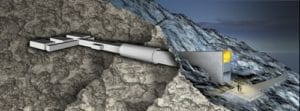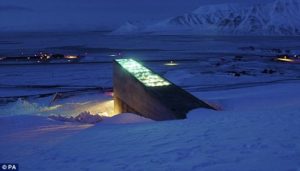28 Sep Interesting Vaults #2
In this instalment of our look into some of the worlds most interesting vaults, we travel to the small Norwegian island of Spitsbergen (located in the remote Arctic Svalbard archipelago, about 1,300 kilometres from the North Pole).
Buried 120 metres into a sandstone mountain and built by the Norwegian government (at a cost of $9m US dollars) its purpose is to store and preserve a wide variety of plant seeds. The idea being, that in the event of a global crisis, no seed types are lost and crops or flowers can be grown from the samples held securely in this vault.
Spitsbergen was considered ideal because it lacked tectonic activity and had permafrost, which aids preservation. Being 130 metres (430 feet) above sea level will keep the site dry even if the ice caps melt.

Locally mined coal provides power for refrigeration units that further cool the seeds to the internationally recommended standard of −18 °C (−0.4 °F). If the equipment fails, at least several weeks will elapse before the facility rises to the surrounding sandstone bedrock’s temperature of −3 °C (27 °F).
The vault typically stores the seed samples (usually around 500 seeds) in an airtight aluminium bag and has the capacity to hold 4.5 million samples.
Storing seeds in the vault is free to end users, with Norway and the Global Crop Diversity Trust paying for operational costs. Primary funding for the Trust comes from such organisations as the Bill & Melinda Gates Foundation and from various governments worldwide. The seed vault functions like a safe deposit box in a bank. In this case, the Norwegian Government owns the building and the depositor owns the seeds.

The Svalbard Global Seed Vault ranked at No. 6 on Time Magazines Best Inventions of 2008 and won the Nobel Lighting Prize in 2009.
It is reassuring to know that such facilities exist and that in the event of some sort of global catastrophe, these genetic blueprints can be used to regenerate lost crops, flowers and vegetables.

